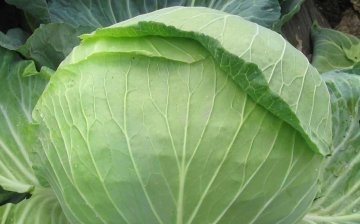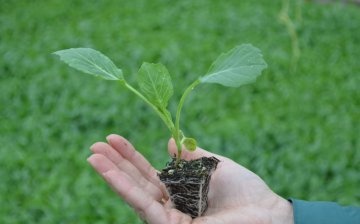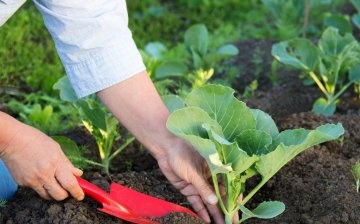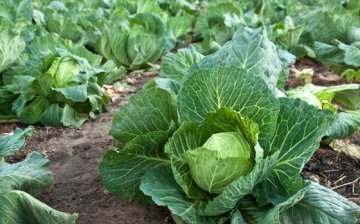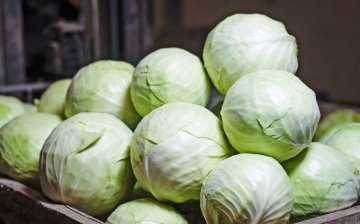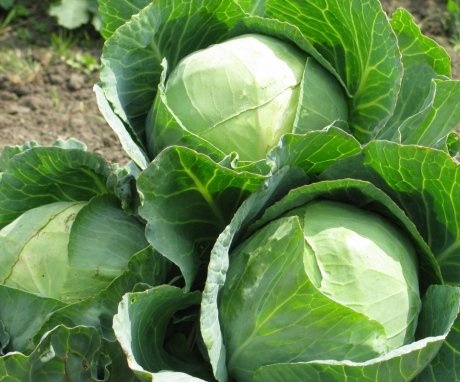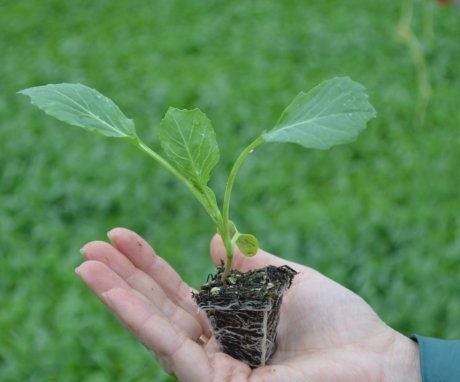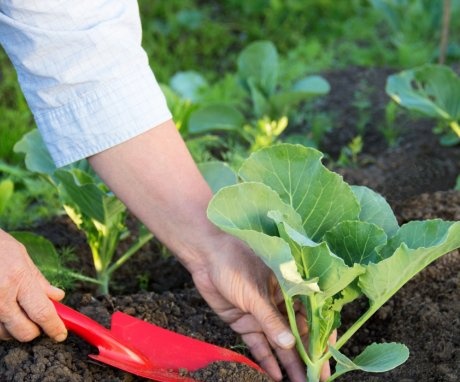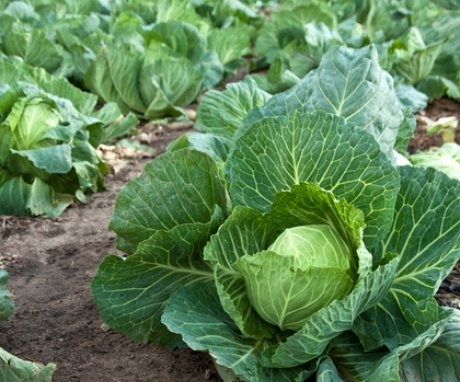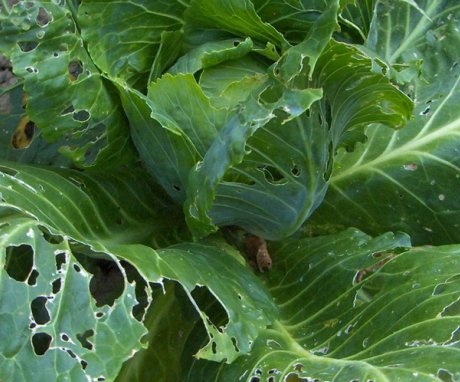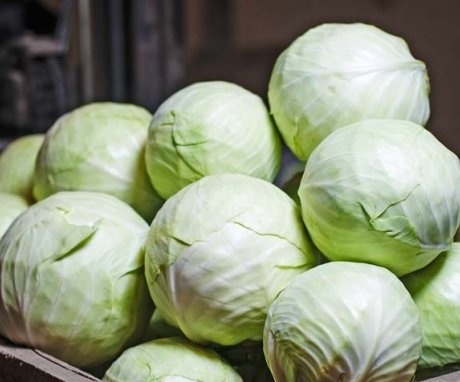Cabbage Sugarloaf: characteristics, agricultural technology and harvesting
White cabbage firmly took a leading place in the preparation of various culinary delights. No one can imagine red borscht or cabbage rolls without cabbage, and spring salad will not be so nutritious and rich without chopped green leaves. Many gardeners use different varieties for planting seedlings. The most commonly preferred cabbage is Sugarloaf. It has specific advantages and is easy to care for.
Content:
- Description and advantages of the variety
- Growing and caring for seedlings
- Transplanting seedlings into open ground
- Cabbage care tips
- Diseases and pests, the fight against them
- Harvesting and storage methods for cabbage
Description and advantages of the variety
Sugarloaf cabbage belongs to the white cabbage family from the Cruciferous family tree. The culture belongs to late-ripening varieties. A variety of the plant was bred by breeders only 10 years ago, in 2018, in the Sedek company, which is located in Moscow. Vegetable cultivation can be used both on an industrial scale and in small country-type farms.
When ripe, the plant has a fairly large rosette, which is 80 cm wide. The height of the bush is no more than 40 cm. The period of full maturation from the moment of planting takes from 130 to 160-165 days. The weight of a fully ready-to-eat vegetable is on average from 2 to 4-5 kg. The maximum possible head of cabbage obtained was 6.5 kg.
The foliage of the plant is represented by a slightly bubbly type, large in diameter and round in shape. The leaf plates have a gray-green tint of a gentle tone. A waxy bloom is observed on the surface of the leaf, pubescent slightly more than usual. At the edges, the sheet plates are defined as wavy. The outer stump is of medium length, the inner one is also short.
Ripe cabbage has a mild and juicy flavor.
There are no rigid transverse partitions on the sheets. Each plate is crispy and has a pleasant aftertaste. This is due to the fact that the organic sugar index in the internal content of the culture is higher than in other similar varieties. And also the composition of the plant is rich in vitamins and micronutrients. For full ripening and lack of bitterness, cabbage should be harvested only in winter, after the onset of the second frost. The use of white cabbage for food or pickling is best one month after harvesting from the garden. This is necessary so that any bitterness goes away, and the vegetable matures well.
For experienced gardeners, one acquaintance with the description is not enough, it is necessary to highlight the main features and positive aspects, as well as to show the disadvantages of the Sweet head of white cabbage variety. The following advantages of the vegetable are distinguished:
- Taste qualities fully justify the name of the plant. Because of its taste, cabbage outshines other varieties.
- It has a high content of microelements and vitamins: vitamins of group B (1, 9, 2), PP, C, iodine, sodium, iron, fluorine, calcium, manganese, phosphorus.
- Excellent storage conditions: heads of cabbage are able to preserve all their original characteristics and useful composition for a long time after harvest, practically until May, provided that the conditions for keeping vegetables are favorable.
- They stand out for their high-quality presentation: they do not crack during transportation and sale.
- Has increased resistance to diseases: fusarium, bacteriosis, keela.
- The sown seeds have an increased germination rate, which favorably affects the receipt of seedlings for planting in open ground.
There are practically no drawbacks of this culture of the Sweet Head variety. The only drawback is the lack of an increased yield under unfavorable growing conditions. In this case, it is possible to collect no more than 6 kg. from 1 m2. but this is rather a deficiency not of a plant, but of a gardener who does not fulfill the necessary conditions for care.
Growing and caring for seedlings
Cultivation of white cabbage Sweet head has minor differences from other crops. This variety is late ripening, so planting of planting material should be carried out in early February. If you need to get a late harvest, then the deadline for planting is mid-March. The later the seedlings are planted, the longer the period of their germination and head formation will be. You should not choose a later date for planting seedlings. This is due to the fact that the head will not have time to form and it is possible not to get a high-quality harvest.
Before planting seeds, you should carefully look at the packaging in which the planting material was sold. If the seedlings have not been processed, then they should be soaked for a period of 12 hours in a consistency of 1 liter combined from water. and potassium humate 1 g. After aging in the essence, the planting material should be rinsed and blotted with a soft napkin. Then put the seeds in a cool place and keep them in this state for 24 hours.
Features of growing cabbage seedlings:
- Before planting, it is recommended to prepare the soil for seedlings. To do this, it is worth purchasing the substrate in a specialized store. But it is best to prepare it yourself: take in equal parts humus, dry crushed peat and leafy soil. In addition to the total mix, add a small amount of sand in the amount of 5-7%.
- Planting seeds for seedlings can be carried out both in open ground and in specially prepared containers. If planting is carried out according to the first option, then after planting the seeds, it is worth covering the territory with a film.
- In this case, the optimum conditions for burying seedlings must take into account the temperature of the soil. This will help the shoots germinate faster. The soil substrate should warm up to +14 .. + 17 C. It is worth considering the sowing density - 5x5 cm from one seed to another, to a depth of no more than 1.5 cm.
- When planting planting material in flowerpots, they are placed on a sunny windowsill. The laughter of the burial planting is repeated, as for planting in the ground. If the planting was carried out, but the seedlings appeared in a dense forest, then they should be partially removed or discharged, so that the distance between the seedlings is at least 5 cm.
- After planting the seedlings, it is recommended to stretch plastic wrap over the container. She will create a microclimate that allows the first shoots to germinate quickly. The emerging shoots signal that the film should be removed.
- Before burying the planting material, the holes or container for seedlings must be thoroughly moistened. After deepening, watering is carried out as needed, but so that the soil substrate does not dry out completely.
Before planting seedlings in open ground, you should add 2 times feeding:
- 14 days after the appearance of the first shoots, fertilizers are applied, consisting of potassium, nitrogen and phosphorus.
- 10-14 days before transplanting into open ground, planting should be fertilized with a compound of 10 liters. water, potassium sulfate and urea - each in a volume of 15 g.
Planting in open ground is carried out after 4 full-fledged leaves have appeared on the sprout.
Transplanting seedlings into open ground
To transplant a plant into open ground, you must adhere to certain recommendations and rules:
- Do not plant seedlings in one place for 2 years in a row. It is best to place the seedlings in the area where the tubers grew last year. potatoes, legumes, onion or pumpkin.
- For planting, you must choose a slightly acidic soil or soil with a neutral pH environment.
- It is recommended to plant seedlings only in a sunny, windproof area.
Before planting a crop, the soil should be prepared. In the autumn period, or, if it was not possible before, 30-45 days before planting, dig up the site and place organic fertilizers in it. This is necessary so that all nutrient components dissolve and nourish the soil with high quality.
For transplanting seedlings into open ground, the seedlings must get stronger. A favorable moment for rooting in the open air - the age of the seedlings is 60 days. The best option for placement on a personal plot is the last day of June - the first decade of July, according to the scheme - 60x60 cm from each other.
Before the planting procedure itself, the following components are introduced into the hole: 50 gr. humus, 2-3 gr. urea, 5 gr. superphosphate, 4 gr. potash sulfur.
It is required to deepen the seedlings up to the cotyledons on the seedling. All seedlings obtained when growing seedlings are not planted. They are required to replace dead shoots during transplantation. Subsequently, watering, loosening and feeding of young plants is carried out.
Cabbage care tips
For fast and high-quality growth of Sugarloaf cabbage, little care is needed .:
- First of all, the seedlings need to be fed as the leaf plates develop during the growing season. The procedure is carried out 2-3 times per season. To do this, you will need to add manure, previously diluted with water in a ratio of 1 to 5.
- When 10-12 leaves appear on the plant, the shrub needs to be hilled. This is required to strengthen root system... Thanks to this procedure, new rhizomes will appear.
- Cabbage is not often watered. For full growth and further development, the introduction of nutrient moisture is carried out 1 time in 3 weeks. The volume of water should not be excessively large. Irrigation should be carried out, but in such a way that the soil does not turn into a swampy mass. But it is not worth it to bring the soil to dryness. Water most often and abundantly - when a head of cabbage is formed. After the introduction of nutrient moisture, it is required to carry out a loosening procedure, while eliminating all weeds that have grown during this period.
For 21-28 days before harvesting, irrigation of the plant is completely stopped. This is required to prevent the fully formed head from cracking. Otherwise, when the plant is deformed, sold or eaten, the product is not subject. The main thing is to follow all the recommendations for care and then the plant will develop as a large vegetable, which will allow you to get a high-quality and plentiful harvest from your personal plot.
Diseases and pests, the fight against them
Sugarloaf is highly resistant to many diseases that can affect the culture. But if the gardener does not fulfill the requirements for caring for the plant, as well as when unfavorable growing conditions develop.
There are the following diseases that Sugarloaf cabbage is susceptible to:
- Keela is a disease located on the root system of a vegetable, provoking the development of a fungus on the rhizomes. Correct crop rotation must be followed to prevent this problem.You should not plant a plant for 2 years in a row on one site. If last year the shrubs were affected by the disease, then the soil should be well dug up before frost, and in preparation for planting, the planting substrate should be thoroughly disinfected. It is also necessary to remove weeds in a timely manner. Before carrying out an event for planting seedlings, it is first required to add lime to the soil. When shoots affected by the disease are identified, planting without regret is neutralized from the garden.
- Fusarium - when infected with a disease, the leaf plates wilt. The affected plant must be immediately removed from the garden in order not to provoke the spread of the disease to other seedlings. After removing the bush from the territory, the soil should be treated with copper sulfate, and the remaining healthy shrubs should be treated chemical fungicides... For this, drugs such as Agat-25 or Immunocytophyte are suitable.
- Bacteriosis - when infected, blackening of the veins is revealed, at the same time, yellowing of the edges of the cabbage is observed. Over time, the leaf plates begin to fade and die off completely. For prophylaxis, it is recommended to use Fitolavin 300 for pollination of seedlings. When planting, all weak and underdeveloped seedlings should be removed in advance.
- When developing on blackleg seedlings, it is recommended to influence the planting with Previkur or Trichodermin.
- When attacking a downy mildew shrub, it is required to treat the leaf plates with copper sulfate, copper oxychloride, cuproxate or pollinate the plantings with ground sulfur.
If the plant is infected with pests, then in the presence of the latter in small quantities, they must be removed mechanically. In the case when the moment is missed and the population of living creatures has grown, drastic measures are required.
Most often, cabbage aphids and cruciferous fleas tend to attack Sugarloaf cabbage:
- To combat the cruciferous flea, it is necessary to spray the seedlings with an ash solution. To do this, you need to dilute the consistency from a bucket of water and 250 gr. wood ash... Pollination with grated ash can be carried out. If traditional methods do not help, you should use chemical insecticidessuch as Decis or Initiation.
- To prevent the invasion of cabbage aphids, it is recommended to plant dill or parsley in advance around the perimeter of the plantings. These green spaces attract hoverflies and ladybirds, which neutralize aphids by feeding on them.
To prevent the development of a disease or the appearance of parasitic insects, it is necessary to control the appearance and condition of the cabbage. If any changes are detected, control measures should be taken immediately.
Harvesting and storage methods for cabbage
To harvest the sweet fruit, it is recommended to wait for the 2nd frost. You can pick vegetables at an earlier time, but the leaf plates will then taste bitter. The collection is carried out in a different period: for the northern regions, the date of the deadline occurs in the last days of September - the first ten days of October.
In southern cities, the duration of collecting a plant from the garden moves to the end of November - the end of December. After the onset of frost, it is not worth leaving the heads on the bush for a long time, they may begin to rot. Therefore, it is worth choosing a good, dry, calm day.
There are several ways to store the harvested crop:
- In a wooden box or cardboard box - the simplest and most suitable method. The heads of cabbage should be placed in a container in one layer; care must be taken that the heads do not touch each other.
- On cushions made of river sand, river sand is poured into a shallow box. The volume of the substrate should not exceed 20 cm at the bottom of the container. The consistency of the sand must be completely wet. The head of cabbage is stuck into the sand with a stump, but the length of the stump should not be less than 8 cm.
- On the shelves is one of the most commonly used methods.Racks along the walls are being prepared. The width of the seat should be about 20 cm, and the height - 30 cm. The heads are wrapped in cling film or paper, on the shelf they are stumped up.
- In the sand - you can place the collected vegetables not only in the sand pillow, but also in it itself. To do this, the stumps must be cut to the very head. Heads of cabbage are laid out in a wooden box at a short distance from each other (3-5 cm) and completely covered with river sand. If possible, you can lay the second and subsequent layers.
Thanks to proper storage, the harvested crop can be preserved for a long period and not lose its original taste. Thus, Sugarloaf cabbage differs from other varieties by its peculiar taste and late ripening. For its cultivation, planting in the open field and planting seedlings in containers are suitable. To obtain a high-quality harvest, it is necessary to follow the care recommendations and monitor the state of the plantings. After harvesting, it is worth choosing the optimal storage method, which allows you to use your own-grown products for a long time.
More information can be found in the video:



